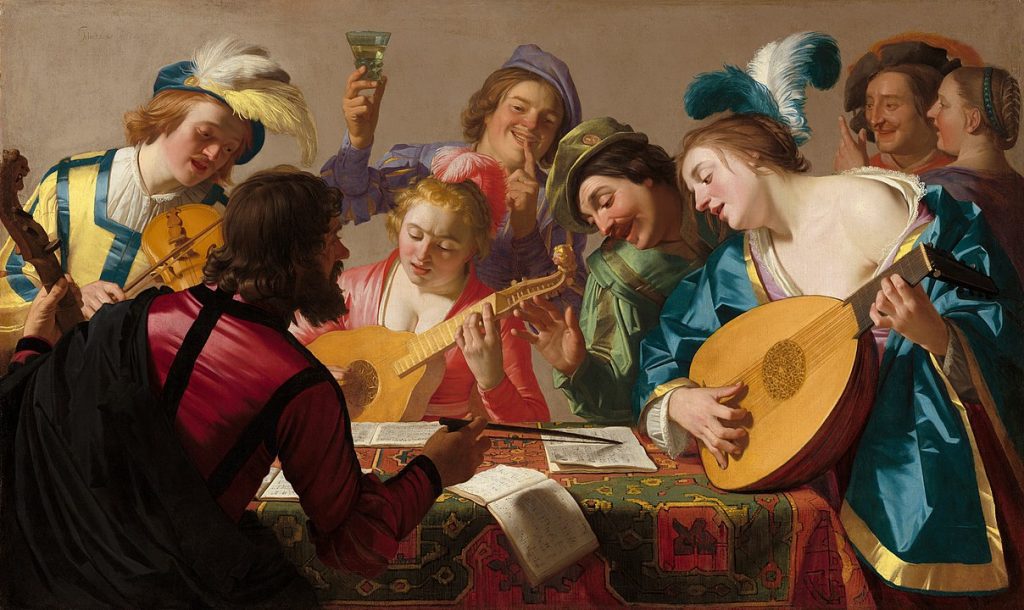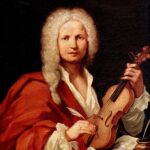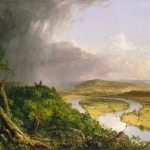
The Baroque period, spanning from approximately 1600 to 1750, was a time of extraordinary cultural and artistic flourishing across Europe. Emerging in the wake of the Renaissance, this era brought a shift toward heightened emotional expression, dramatic intensity, and grandeur in all creative endeavors. The Baroque style touched every facet of human expression, from music and painting to sculpture, architecture, and beyond. At its core was the ambition to move and captivate audiences, drawing them into a world of profound emotion and dynamic storytelling.
During this period, art and music were deeply intertwined, sharing thematic concerns and stylistic approaches that defined the age. Both forms embraced complexity, contrast, and movement, creating a multisensory experience for audiences. Religious devotion, political power, and human passion served as central inspirations, leading to masterpieces that still resonate with modern audiences. The works of Johann Sebastian Bach, for instance, echo the same sense of drama and devotion found in the paintings of Caravaggio, showcasing a shared artistic ethos.
This era also witnessed the rise of patronage, where monarchs, aristocrats, and the Church played a pivotal role in commissioning and supporting artists and composers. Figures like Louis XIV of France and Popes Urban VIII and Innocent X shaped the creative landscape by funding ambitious projects designed to reflect their power and piety. These patronage networks created opportunities for collaboration between artists of different disciplines, leading to a flourishing of interdisciplinary works.
Ultimately, the Baroque period is remembered as a time of unparalleled artistic innovation, where music and visual art worked in harmony to evoke awe and wonder. The connection between these forms went beyond superficial similarities, reflecting a shared vision of artistic excellence and emotional resonance. This article explores the profound synergy between Baroque music and visual art, delving into their shared aesthetic principles, religious influences, and lasting legacy.
The Baroque Aesthetic: Defining a Shared Language
The Baroque aesthetic is characterized by its dramatic intensity, elaborate ornamentation, and dynamic movement, qualities that permeated both visual art and music of the era. At its core, Baroque art sought to engage the viewer or listener on a deeply emotional level, using techniques that created a sense of motion and immediacy. In painting, this is evident in the use of chiaroscuro, a dramatic interplay of light and shadow, as seen in Caravaggio’s The Calling of Saint Matthew. Similarly, in music, composers like Antonio Vivaldi employed dynamic contrasts and intricate ornamentation to captivate their audiences.
Both forms of art emphasized storytelling and theatricality, with a focus on creating immersive experiences. In visual art, this was achieved through dynamic compositions that seemed to break free from the confines of the canvas, as seen in Peter Paul Rubens’ The Descent from the Cross. In music, the same sense of movement and drama was achieved through techniques like ritornello form and rapid shifts in tempo, which are hallmarks of works like Bach’s Brandenburg Concertos. These techniques reflected a shared commitment to making art that felt alive and immediate.
Another defining feature of the Baroque aesthetic is its use of contrast to heighten emotional impact. In visual art, this can be seen in the juxtaposition of light and dark, as well as the contrast between serene and violent imagery. In music, contrast manifested in the interplay between soloists and ensembles, soft and loud dynamics, and major and minor keys. Handel’s oratorios, for example, juxtapose majestic choruses with intimate solo arias, creating a rich tapestry of sound that mirrors the visual complexity of Baroque paintings.
Ultimately, the shared language of the Baroque aesthetic reflects a unified vision of art that transcends individual disciplines. Whether through the sweeping gestures of a Rubens painting or the cascading notes of a Vivaldi concerto, Baroque artists and composers sought to evoke a profound emotional response. This connection underscores the deeply interconnected nature of creativity during this period, where music and visual art worked in tandem to move and inspire audiences.
The Influence of Religion and Power on Art and Music
Religion played a central role in shaping the Baroque period, with the Catholic Church and the Counter-Reformation serving as major driving forces behind its artistic innovations. Following the Protestant Reformation, the Catholic Church sought to reassert its authority through art and music that could inspire devotion and reinforce its teachings. This effort is evident in works like Bernini’s Ecstasy of Saint Teresa, a sculpture that captures the divine rapture of a saint, and Handel’s Messiah, a musical masterpiece that celebrates the life of Christ.
The Church’s influence extended to commissioning grand architectural projects that combined visual and musical art in a unified experience. St. Peter’s Basilica in Rome, for example, became a stage for elaborate musical performances that complemented its awe-inspiring visual design. The use of space, light, and sound created an immersive environment that reinforced the spiritual messages of the Church. These projects reflected the Baroque ideal of art as a total sensory experience, where sight and sound worked together to inspire faith.
Monarchs and aristocrats also used Baroque art and music to assert their power and legitimacy. Louis XIV of France, known as the “Sun King,” exemplified this trend through his patronage of both visual artists and composers. The Palace of Versailles, with its opulent architecture and gardens, served as a backdrop for courtly performances featuring music by composers like Jean-Baptiste Lully. These performances reinforced the image of Louis XIV as a ruler whose authority was divinely ordained, blending art and music into a cohesive expression of power.
While the influence of religion and power is most evident in large-scale commissions, it also shaped smaller, more intimate works. Baroque composers and artists often created pieces that reflected personal faith or served as private expressions of devotion. This duality—grand public displays and intimate private works—demonstrates the versatility of Baroque art and music in addressing both communal and individual spiritual needs. Through this interplay, the Baroque period established a rich legacy of artistic achievement that continues to resonate with audiences today.
Key Figures Bridging Music and Visual Art
Several key figures from the Baroque period exemplify the deep connections between music and visual art, showcasing how these disciplines influenced and enriched each other. Johann Sebastian Bach, one of the most renowned composers of the era, often collaborated with organ builders and architects to create music that complemented the spaces in which it was performed. His works, such as the Toccata and Fugue in D Minor, reflect an architectural sense of structure and balance, mirroring the grandeur of Baroque cathedrals.
Peter Paul Rubens, a master of Baroque painting, also engaged with the world of music through his work for royal courts and religious institutions. His dynamic compositions, such as The Garden of Love, were often commissioned for spaces where music played an integral role in creating a festive or contemplative atmosphere. Rubens’ ability to capture movement and emotion in his paintings parallels the dramatic intensity found in Baroque music, highlighting the shared sensibilities of these art forms.
Opera, a quintessential Baroque invention, serves as a perfect example of the fusion of music, drama, and visual art. Claudio Monteverdi, often regarded as the father of opera, combined these elements in works like L’Orfeo, which brought mythological stories to life through a synthesis of orchestral music, vocal performance, and stage design. Monteverdi’s innovations paved the way for future collaborations between composers, librettists, and set designers, demonstrating the interdisciplinary nature of Baroque creativity.
These figures and their collaborations underscore the interconnectedness of Baroque art and music, illustrating how these disciplines influenced and enhanced one another. Whether through grand architectural projects or intimate operatic performances, the Baroque period stands as a testament to the power of artistic collaboration. This synergy not only defined the era but also set a precedent for future artistic movements.
The Legacy of Baroque Art and Music
The legacy of the Baroque period is one of enduring influence, as its artistic principles continue to inspire and captivate audiences today. Baroque music, with its intricate melodies and emotional depth, laid the foundation for later styles such as the Classical and Romantic eras. Composers like Mozart and Beethoven drew inspiration from Baroque techniques, incorporating counterpoint and ornamentation into their works. Similarly, the dramatic intensity of Baroque art influenced movements like Neoclassicism and Romanticism, which sought to evoke similar emotional responses.
Modern institutions and festivals dedicated to Baroque art and music ensure that this rich heritage remains accessible to contemporary audiences. Organizations such as the International Baroque Music Festival and museums like the Louvre showcase Baroque masterpieces, providing opportunities for new generations to experience the beauty and power of this era. These events highlight the timeless appeal of Baroque art, proving that its emotional resonance transcends time and cultural boundaries.
The advent of modern technology has further expanded access to Baroque art and music, allowing audiences around the world to explore its treasures. Digital platforms offer recordings of Baroque compositions performed by historically informed ensembles, while virtual tours of Baroque churches and galleries bring the visual splendor of the period to life. This accessibility ensures that the Baroque legacy continues to inspire and educate, fostering a deeper appreciation for its achievements.
Ultimately, the Baroque period represents a unique moment in history where music and visual art achieved an unparalleled level of synergy. This legacy serves as a reminder of the power of creativity to transcend boundaries, bringing people together through shared experiences of beauty and emotion. By celebrating the connection between music and visual art, we honor the enduring spirit of the Baroque and its contributions to the world of art.
Key Takeaways
- The Baroque period emphasized drama, emotion, and grandeur in both music and visual art.
- Religion and politics were central influences, shaping the themes and styles of Baroque creativity.
- Key figures like Bach, Rubens, and Monteverdi exemplified the interdisciplinary nature of Baroque art.
- Baroque art and music set the foundation for future movements, such as Classical and Romantic styles.
- Modern institutions and digital platforms keep the Baroque legacy alive for contemporary audiences.
FAQs
- What is the Baroque period?
The Baroque period (1600–1750) was an era of dramatic, emotional, and ornate artistic expression in Europe. - How are Baroque music and visual art connected?
Both shared themes of drama, movement, and emotional intensity, often collaborating to create unified experiences. - Who were notable Baroque artists and composers?
Figures like Johann Sebastian Bach, Peter Paul Rubens, and Claudio Monteverdi were key contributors. - What role did religion play in Baroque art?
Religion, particularly the Catholic Church, heavily influenced Baroque art, using it to inspire devotion and reinforce authority. - Why is the Baroque period significant today?
Its innovative techniques and emotional depth continue to influence art and music, captivating modern audiences.




